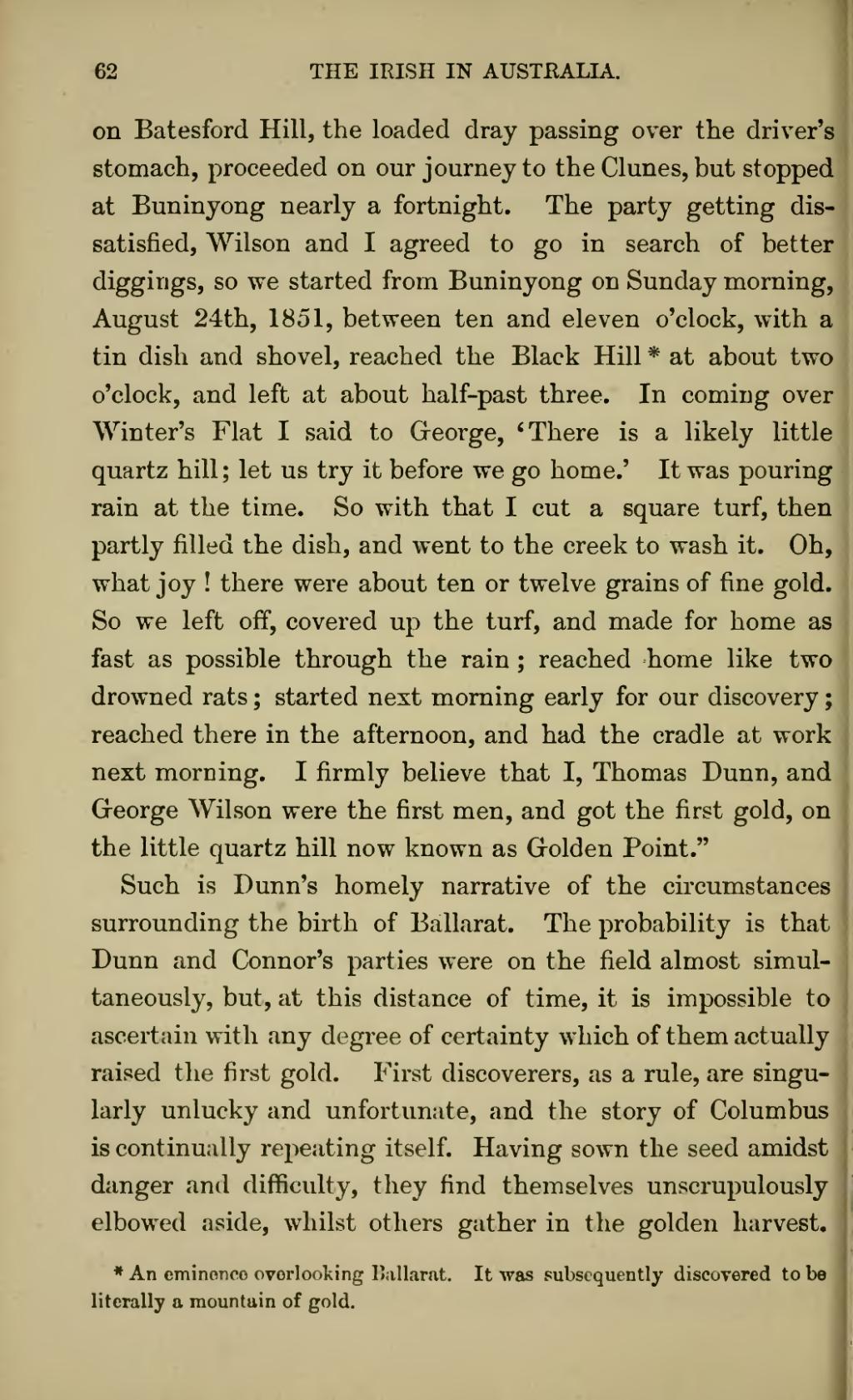on Batesford Hill, the loaded dray passing over the driver's stomach, proceeded on our journey to the Clunes, but stopped at Buninyong nearly a fortnight. The party getting dissatisfied, Wilson and I agreed to go in search of better diggings, so we started from Buninyong on Sunday morning, August 24th, 1851, between ten and eleven o'clock, with a tin dish and shovel, reached the Black Hill[1] at about two o'clock, and left at about half-past three. In coming over Winter's Flat I said to George, 'There is a likely little quartz hill; let us try it before we go home.' It was pouring rain at the time. So with that I cut a square turf, then partly filled the dish, and went to the creek to wash it. Oh, what joy! there were about ten or twelve grains of fine gold. So we left off, covered up the turf, and made for home as fast as possible through the rain; reached home like two drowned rats; started next morning early for our discovery; reached there in the afternoon, and had the cradle at work next morning. I firmly believe that I, Thomas Dunn, and George Wilson were the first men, and got the first gold, on the little quartz hill now known as Golden Point."
Such is Dunn's homely narrative of the circumstances I surrounding the birth of Ballarat. The probability is that Dunn and Connor's parties were on the field almost simultaneously, but, at this distance of time, it is impossible to ascertain with any degree of certainty which of them actually raised the first gold. First discoverers, as a rule, are singularly unlucky and unfortunate, and the story of Columbus is continually repeating itself. Having sown the seed amidst danger and difficulty, they find themselves unscrupulously elbowed aside, whilst others gather in the golden harvest.
- ↑ An eminence overlooking Ballarat. It was subsequently discovered to be literally a mountain of gold.
